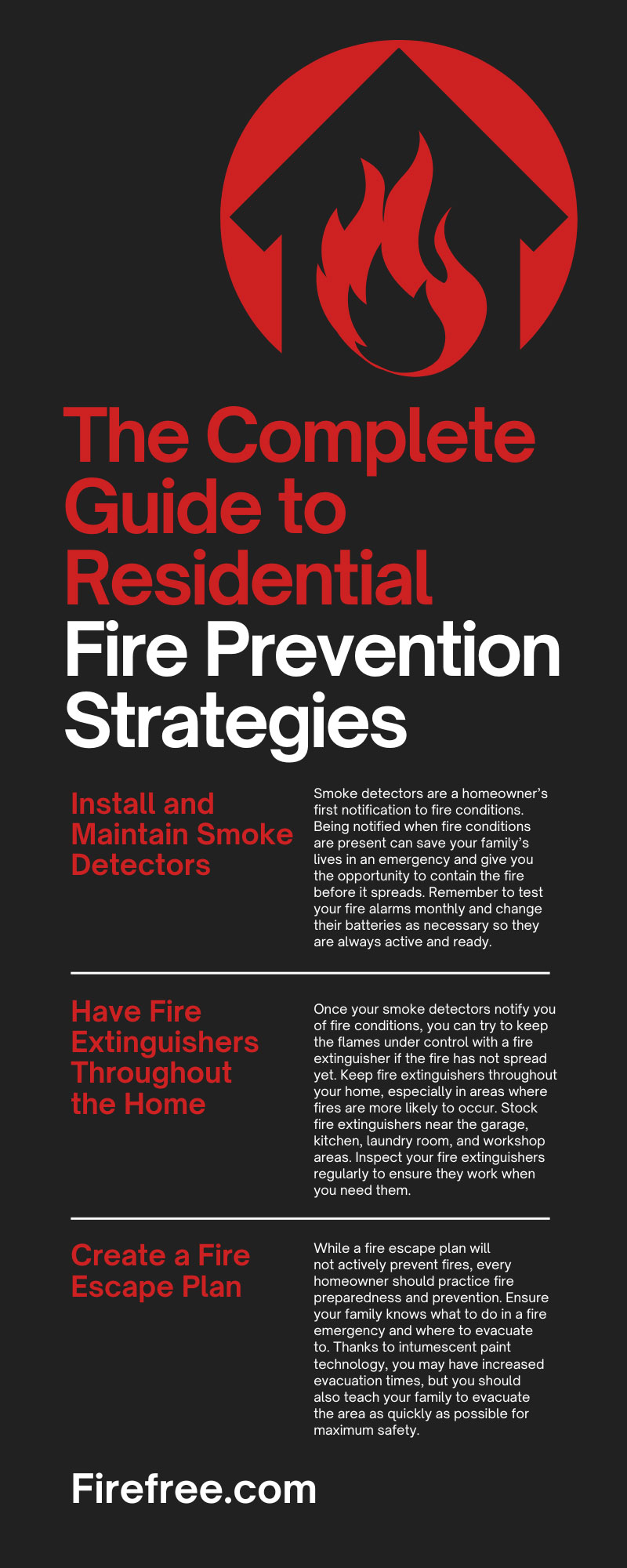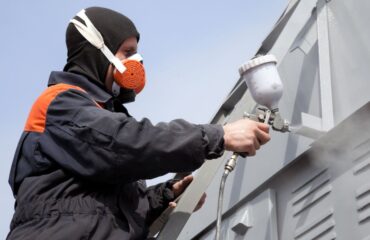
A fire breaking out at home is a homeowner’s worst nightmare. Residential fires make up hundreds of thousands of fire events every year. This is why we have prepared a complete guide to residential fire prevention strategies for homeowners, contractors, and builders. Everyone should know how to prevent house fires, from the design and construction phase to daily habits when living at home. Keep reading to learn how to keep your home safe with key prevention strategies.
Common Residential Fire Causes
Before you can understand the best fire prevention strategies, you need to know the causes behind residential fires. Homes and residential buildings have unique fire risks compared with commercial and industrial ones. Whether you are a homeowner or contractor who works with and designs residential buildings, be aware of the common fire risks. Keep reading to learn the most common causes of residential fires to watch out for.
Cooking Fires
Cooking and kitchen accidents are the leading causes of house fires. Whether a homeowner uses open flames on the range, releases intense heat from the oven, or even overheats their microwave, plenty of fire hazards present themselves in the kitchen space. Did you know that most home kitchen fires begin in the ignition stage? Take extra care when lighting fires on your range, stove, grill, or other heating appliances.
Additionally, never leave the kitchen unattended, as ingredients or cooking utensils could catch fire without you knowing, giving you less time to react. Finally, remember to keep flammable materials—such as towels and curtains—away from kitchen appliances.
Heating Equipment
One of the main reasons that the number of residential fires increases in the cooler months is due to malfunctioning or misused heating equipment. Portable space heaters, fireplaces, and HVAC malfunctions are all common fire causes. In fact, space heaters account for over 40 percent of home heating fires. As we approach the colder months, remember these risks, and always use heating equipment responsibly. Position space heaters at least 3 feet away from flammable materials and objects in a room.
Electrical Systems and Accessories
Electrical fires are common in both residential and commercial buildings. Faulty electrical appliances or misuse of electrical accessories often leads to fires. The clothing dryer is another example of a household appliance that can often cause residential fires. Clothing dryers collect lint from clothes and heat up during the drying process, which can cause the lint to ignite. Never leave the house while running the clothes dryer, and always remember to clean the lint trap.
When using electrical cables, appliances, and any other accessories that use electricity, always follow proper safety instructions to avoid fires. For example, unplug frayed cords, and never run electrical cables underneath rugs or carpeting.
Smoking Fires
While smoking has decreased in popularity over the years, lit cigarettes and smoking materials still cause many house fires every year. If you still smoke, you should always do so outdoors and away from structures. Many condominiums and apartment complexes have strict rules against smoking indoors due to the fire risks this activity poses. Even e-cigarettes and vapes can pose fire risks when batteries overheat or you charge them improperly.
Unattended Candles
You should also never leave candles unattended at home. This is especially true for families with children and pets. Kids and animals can easily knock candles over, leading to the flames spreading and causing fires. As with smoking, some residential home complexes do not allow candles either due to the fire risks they can pose.
Prevention Strategies for Residential Fires
Now that you know some of the main causes of residential fires, you can start to explore prevention techniques. These strategies include implementing fireproofing technology and materials, taking care when constructing and remodeling homes, and practicing responsible lifestyle habits that prevent fires.
Install and Maintain Smoke Detectors
Smoke detectors are a homeowner’s first notification to fire conditions. Being notified when fire conditions are present can save your family’s lives in an emergency and give you the opportunity to contain the fire before it spreads. Remember to test your fire alarms monthly and change their batteries as necessary so they are always active and ready.
Have Fire Extinguishers Throughout the Home
Once your smoke detectors notify you of fire conditions, you can try to keep the flames under control with a fire extinguisher if the fire has not spread yet. Keep fire extinguishers throughout your home, especially in areas where fires are more likely to occur. Stock fire extinguishers near the garage, kitchen, laundry room, and workshop areas. Inspect your fire extinguishers regularly to ensure they work when you need them.
Install Intumescent Coatings
In most residential fire situations, you may only have a few short minutes to evacuate before the fire starts to spread, making escape more difficult. One of the biggest benefits of installing intumescent fire coatings is that they help increase home evacuation times by preventing flames from spreading. Plus, fire protection coatings help preserve your home’s structural integrity during a fire, which minimizes damage.
You can use intumescent paints to cover and protect your home’s interior, exterior, and structural materials. These coatings work by releasing heat-reacting chemicals that char and expand, preventing flames from reaching the building materials underneath. Intumescent coatings can help protect your home from fires started indoors and from exterior events like wildfires.
Create a Fire Escape Plan
While a fire escape plan will not actively prevent fires, every homeowner should practice fire preparedness and prevention. Ensure your family knows what to do in a fire emergency and where to evacuate to. Thanks to intumescent paint technology, you may have increased evacuation times, but you should also teach your family to evacuate the area as quickly as possible for maximum safety.
Residential fires are more common during the cooler months, so it is more important than ever to understand these fire prevention strategies as we head into the fall season. Reference this guide during your next home remodel or renovation or if you simply want to assess your home’s fire safety levels. And if you want to reinforce your home or residential property with fire-protection coatings, browse our website at Firefree Inc. to find the best intumescent paint for your needs.


